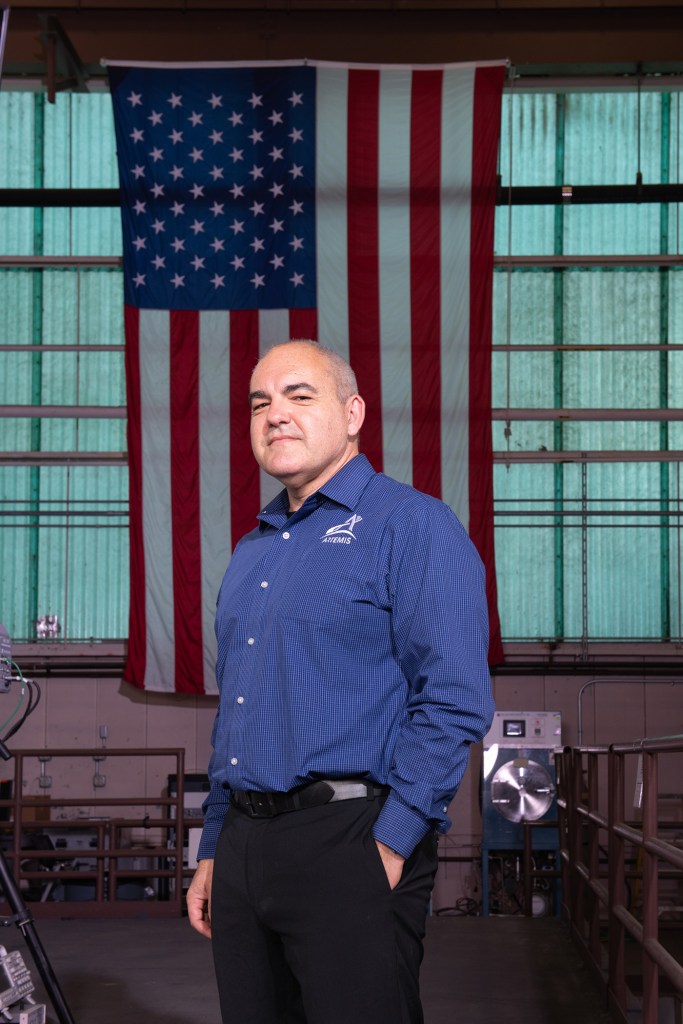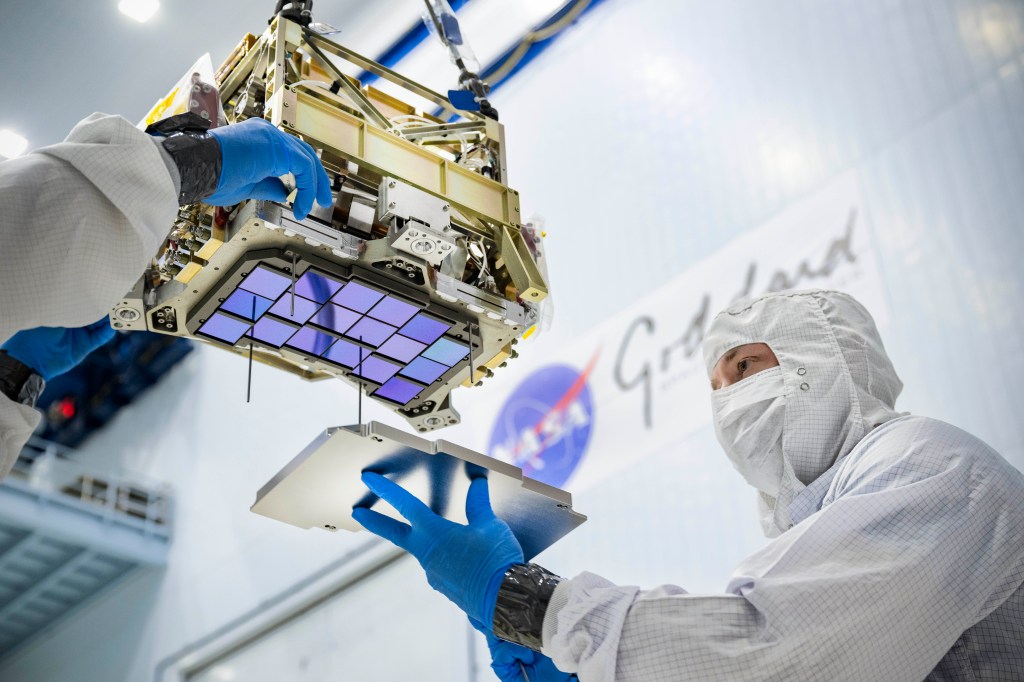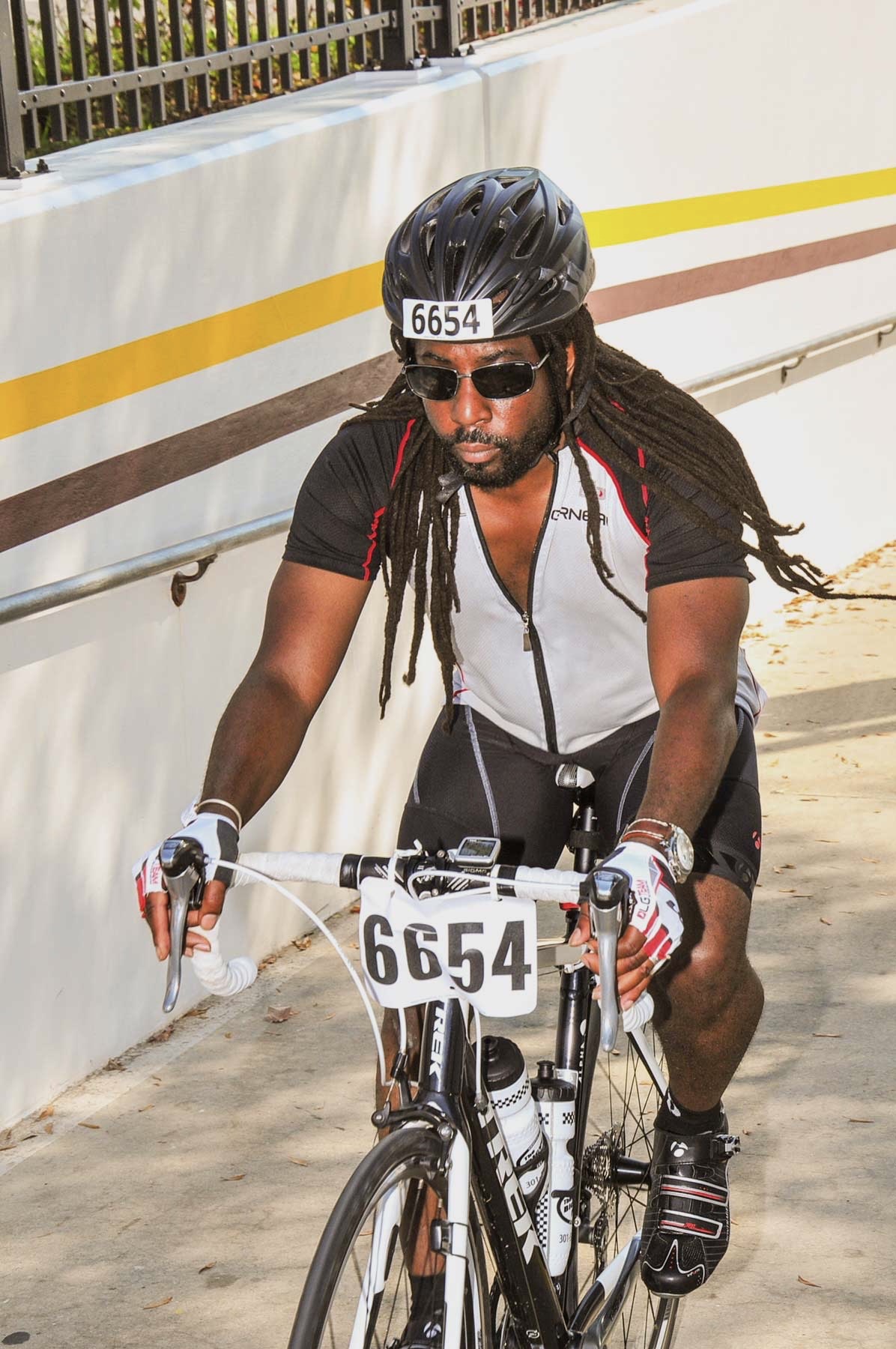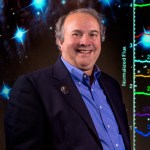Chris Gunn
Lead Technical Photographer for the Roman Space Telescope at NASA’s Goddard Space Flight Center
As a kid Chris Gunn always wondered how big things were built. How did people assemble something as massive as the transcontinental railroad? Or a spacecraft? Now, Chris helps answer the latter question for others as the lead photographer for NASA’s Nancy Grace Roman Space Telescope.
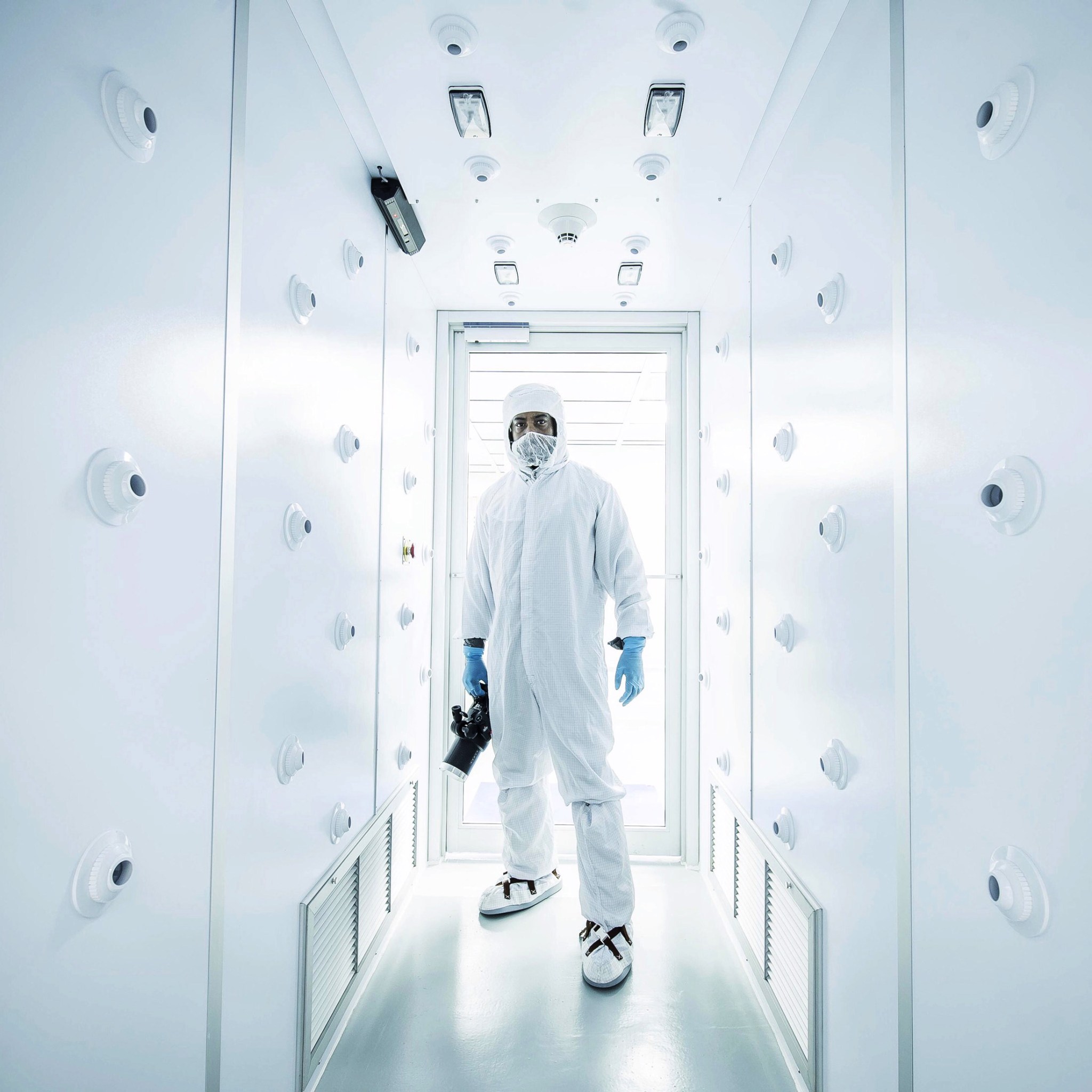
Chris heads a small team of three photographers who meticulously record Roman’s construction from start to finish. The team constantly communicates with the engineers and technical team about Roman’s progress and any documentation needs. “Photography plays a crucial role during every phase of a project’s life cycle at NASA. We photograph component parts, record integration activities, aid in contamination control, and provide important image data during testing operations. Our work is mandated by NASA and Goddard. Photographic documentation is called out in every work order and some of our work is stored in the National Archives. Ultimately our images serve as visual record of what it takes to put a spacecraft into orbit.”
However, Chris’ photographs don’t solely focus on internal technical needs. He also creates compelling images to creatively give the public access to things they might not usually see.
“It’s challenging, but that’s the cool part of the job,” Chris says. “I love making images that make people go, ‘Wow, that’s amazing!’”
In 2000, Chris joined NASA’s Goddard Space Flight Center as a center-wide photographer supporting the Office of Communications. As he bounced between headshots and events, Chris gravitated toward the scientists and engineers, finding reasons to talk to them about their work. The scientists and engineers also inquired about Chris’ work, though often with comments like, “You’re still shooting with film?”
Though he was well acquainted with digital photography in his personal work, film remained the primary medium at Goddard when Chris began. Sparked by the comments from engineers, Chris decided that it could not wait — Goddard’s professional photography needed to match that of hobbyists. He subsequently lobbied to invest in digital cameras and later designed the system used to organize files, spearheading the digital transition.
Eventually, Chris was asked to join the photography team supporting the last servicing mission for the Hubble Space Telescope (SM4), where he worked with the astronauts and engineers as they prepared to upgrade the observatory in 2009. During the mission, Chris worked on console at Johnson Space Center, recording mission images and ensuring the astronauts had access to critical photos in support of extravehicular activities.
Following his work with Hubble, Chris joined the James Webb Space Telescope team as a photographer — a challenging task that occupied Chris from 2009 to 2021 and had him traveling across the world. During his time with Webb, he realized the impact his images could make on the public.
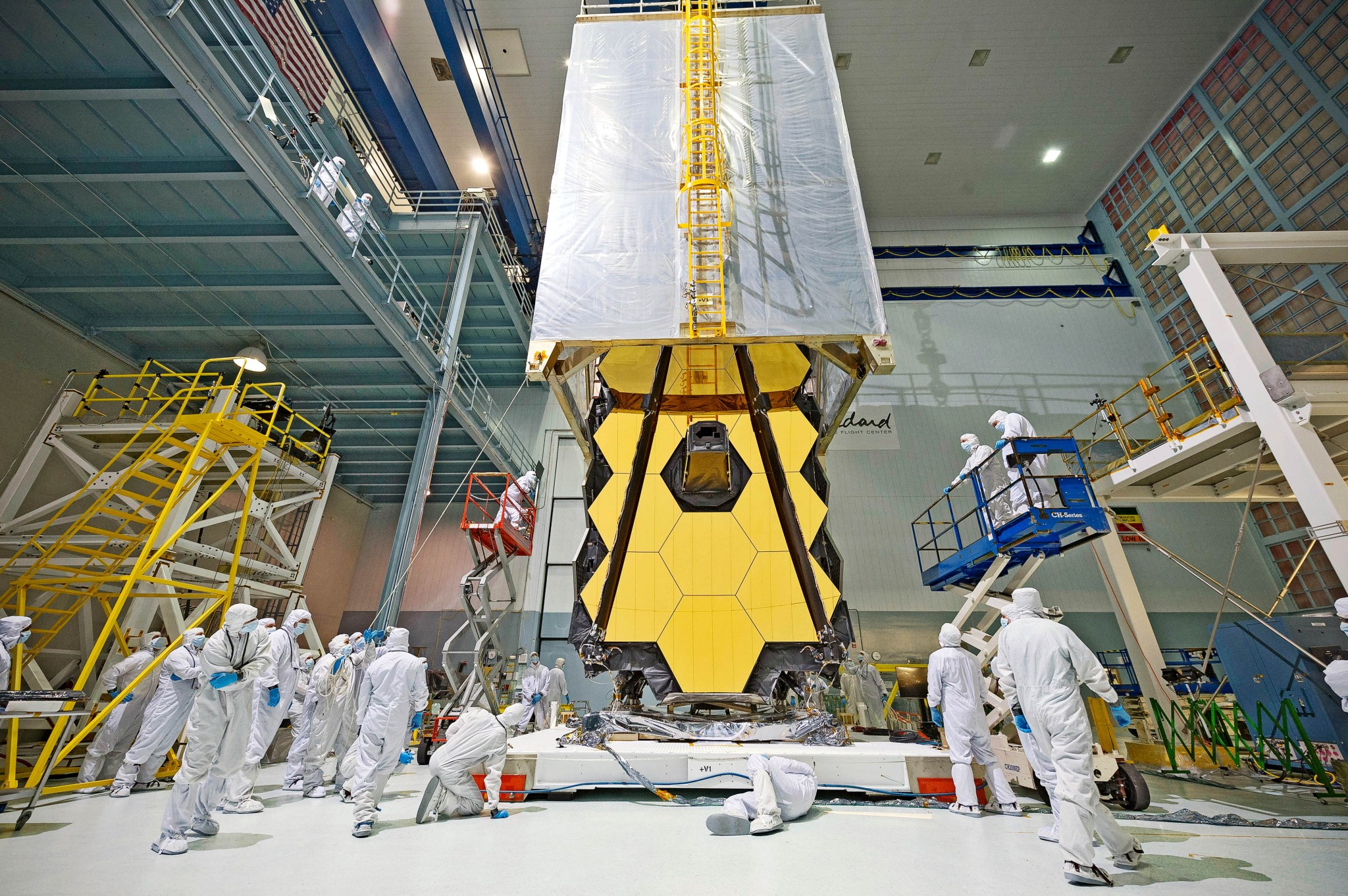
“One of the first images that I made on Webb many years ago was in a Popular Science double page spread,” Chris says. “That’s when I knew that I could make these mundane images compelling enough for the media to pick them up and run with them.”
Fueled by his new inspiration, Chris combined his artistic and editorial photography background with his technical muse, playing with lighting and composition to create dramatic images. Chris’ hard work paid off — in 2019, he received three NASA photographer of the year awards. Aside from Popular Science, Chris’ images have appeared in the New York Times, Scientific American, Wired Magazine, and National Geographic.
“Any time an image of mine gets published in a national or international publication, it really feels great,” Chris says. “When I do that with things that people rarely see, it gives me a huge sense of accomplishment.”
Though Chris had always enjoyed photography as a hobby, he initially disregarded it as a career option. Chris studied political science and communications at Morehouse College. Finishing school and working briefly as a law firm librarian, Chris picked his camera back up, this time taking it more seriously. He cobbled together a specialized photography education by attending classes across American University, the University of the District of Columbia, and Howard University. Then, Chris opened his own freelance studio in D.C. before eventually securing his position at Goddard.
Photographing. In order to capture the entire construction journey, Chris and his team are embedded within the engineering team. They must match the pacing of engineers and technicians while multiple different sub-teams construct telescope components.
“Just keeping up with the project is challenging in and of itself,” Chris says. “Since I’ve worked at Goddard, I’ve had to basically learn a different project from inside and out every time I go from one to another.”
Despite its challenges, Chris enjoys his work.
“The nerd in me likes capturing the day-to-day processes. To be immersed within the team as an official photographer is a dream job,” Chris says. “We get to see the ideas that the scientists had and the engineers helped develop, become reality, and then we get to capture that reality on our cameras.”
The impressive technical achievements Chris has recorded are not lost on him. In his free time, he enjoys working on his own cars and tinkering with various mechanical pursuits.
“Things that I thought were impossible for me, like fixing my own brakes, I now do all by myself,” Chris says. “A lot of that is inspired by what I see at work, and I really enjoy it.”
Now, Chris covers the Nancy Grace Roman Space Telescope’s assembly right at Goddard. Chris has documented Roman since the very beginning and will continue to visually tell its story through the planned launch by 2027.
“Roman’s overall team at Goddard of scientists, engineers, and technicians continue to amaze me with what they can do,” Chris says. “This project involves so many components being assembled and built at the same time, so it’s so much orchestration. It’s just incredible to watch, and I really want to give the public access to the amazing things I see every day.”
By Laine Havens
NASA’s Goddard Space Flight Center

























